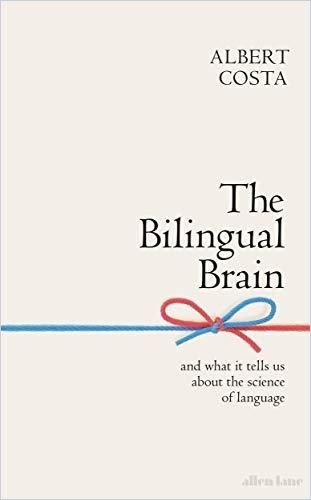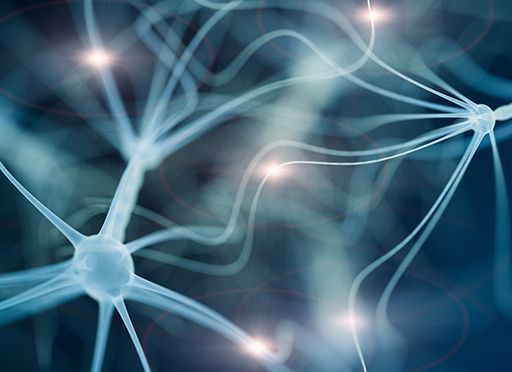Professor Albert Costa explores how learning two languages affects cognitive function, multitasking and processing information.

Language and the Brain
Albert Costa was Research Professor at Pompeu Fabra University in Barcelona and director of the Speech Production and Bilingualism Group at the Centre for Brain and Cognition. He brings his years of research into language and cognitive function to bear on this fascinating topic.
The Guardian said, “Costa has a winningly informal style, a deadpan wit, and mixes laboratory findings of cognitive neuropsychology with examples from everyday life, TV programmes, sports and politics.” The BBC said, “Neuropsychologist Albert Costa spent two decades exploring bilingualism, and his book offers surprising insights.” And The Spectator found that “Costa’s work derives from a great fund of knowledge, considerable curiosity and solidly scientific spirit.”
Two Languages
Babies’ brains, Costa explains, absorb information at only a few months of age. Most babies understand many words at six months and exhibit a surprisingly sophisticated understanding of language.
When babies first learn a language, Costa notes, they have difficulty recognizing when one word ends and another begins. Every language has sonic restrictions that guide the segmentation of words. Costa reveals that eight-month-old babies understand this. Bilingual babies figure out the “phonological” rules that go with each language.
If you really want your child to learn another language, interact with them in that language. Do not trust that the pictures on the TV will do the work for you. As the saying goes: No pain, no gain.Albert Costa
Costa cites studies suggesting that becoming bilingual requires social interaction from a parent or tutor; passive exposure to both languages doesn’t fuel acquisition.
Linguistic Control
Learning a new language, and especially achieving fluency, Costa reveals, proves difficult because of linguistic control. It’s hard for the brain to access words and grammar, and, the author has learned, the first language sometimes interferes with the second. Bilingual speakers work like jugglers, avoiding words from their other language. When bilingual speakers change languages during a conversation, Costa discloses, this code-switching rarely stems from making mistakes. Mixing the Spanish and English “las keys,” for example, sticks to grammatical rules of agreement.
One paradox Costa describes is that it usually takes longer for a person to switch to their dominant language than the non-dominant one. The brain requires a lot of effort to suppress the dominant language, and longer to recover from this inhibition when switching.
Processing Information
Compared to monolinguals, bilinguals feature slower speech production because, the author details, they search for the right word in two languages. Bilingual speakers prove more prone to “tip-of-the-tongue” errors.
Bilingual speakers do not appear to be smarter than monolinguals, and there seems to be no remarkable difference between their cognitive abilities.Albert Costa
College-educated speakers, Costa tells, usually have a vocabulary of about 35,000 words; but most people use only about 1,000 words every day.
Cognitive Functions
Humans use the brain’s “executive control system” for everyday tasks, Costa points out, such as driving a car and talking on the phone at the same time. Driving requires attention but can seem automatic as people pay attention unconsciously. This is similar, the author posits, to what happens when bilinguals have a conversation in either language. Their control mechanisms block interference from the language not in use.
If our emotional reaction to dilemmas presented in a foreign language is less than in the first language, then it may be the case that our moral judgments and decisions resulting from them would be affected by the language in which the dilemmas are presented.Albert Costa
When people multitask, Costa asserts, they minimize and divert their full attention – task switching. Multitasking ability resembles bilinguals switching languages.
Rare Wit
For a research professor, Costa flashes a rare wit and bemused sense of irony. He’s attempting to present highly complex science to a mass audience and his sense of humor proves a boon. But, at times, Costa gets lost in the complications and jargon of his field. When he does, readers may find it best to skip a couple of paragraphs of science and return to Costa’s worthy real-life examples.
He does an excellent job of explaining how infants learn languages, how bilingualism operates in children and adults and how learning new languages nourishes the brain. Though Costa offers much of interest to parents, he does not focus exclusively on child development. How language affects participation in society fascinates him and provides the most riveting section of this easy-to-read and easy-to-remember exploration of the brain via language.
Further academic/scientific explorations of bilingualism include François Grosjean’s Bilingual and her The Psycholinguistics of Bilingualism. Parents may want to read The Bilingual Edge by Kendall King, PhD or Maximize Your Child’s Bilingual Ability by Adam Beck.





